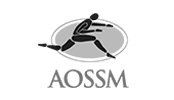SLAP Tear of the Shoulder
A SLAP tear is an injury to the labrum, the cartilage rim that surrounds the socket of the shoulder joint. SLAP stands for "superior labrum anterior and posterior," meaning that the tear occurs at the front of the upper arm where the bicep tendon connects to the shoulder.1








